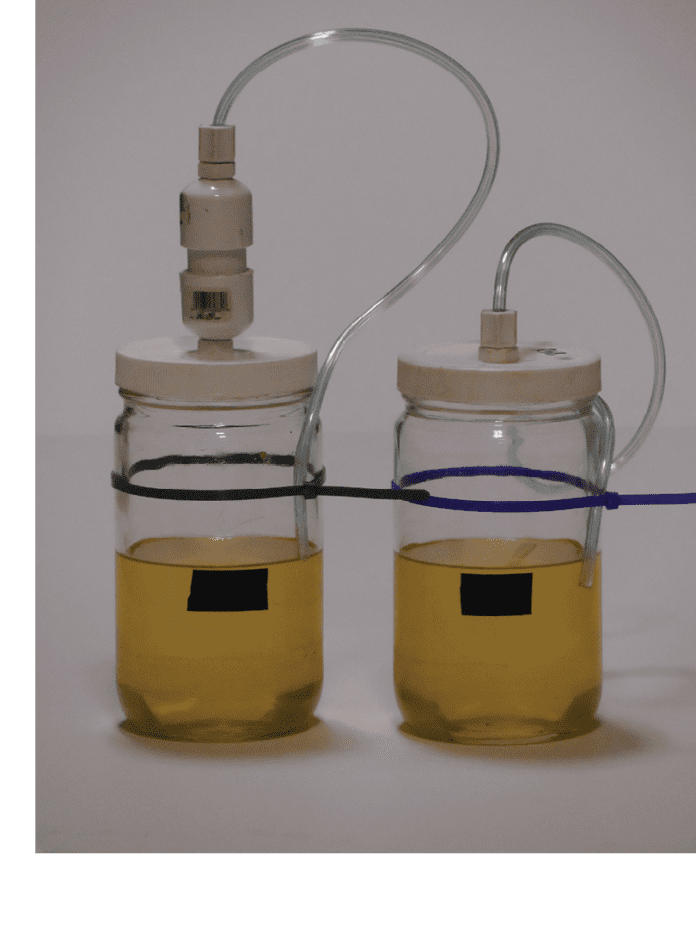When it comes to storing a gasoline powered vessel, you are generally better off keeping tanks full, adding a corrosion-inhibiting additive, and installing a dryer on the fuel vent line. If you follow this practice, gasoline will remain fresh for 1-2 years, easily. We’ve tested this. However, if you store the boat with a partially empty tank, you will accelerate evaporation rate, invite water absorption, and increase the risk of explosion. Some yards even require full gas tanks for safety reasons.
With diesel tanks there are more variables. Many sailors will not burn a full tank of diesel in two years—or more. They motor out of the marina and sail. If they fill their tank, not only will they have a lot of old fuel, they have more to ruin if something goes sideways. Evaporation is a not an issue, nor is explosion danger. Water absorption is less important, though we’d still recommend a vent filter.

Bugs are a problem; treating with Biobor JF or other biocide should solve that. Inspect the O-ring on the filler cap regularly. Most water in fuel orginates from a leak at the deck fill. If you use a vent filter, have a tight filler cap, and treat with Biobor, the odds of infection are very, very low. You can let the tank run down and add fresh fuel in the spring. Or store it full over the winter. In either case, so long as the diesel is treated with a biocide and protected against water intrusion, the fuel will have a 3-5 year shelf life.
Owners of boats with outdated or DIY fuel systems should be aware that certain metals in the fuel system can lead to fuel problems during long-term storage. Avoid copper fuel lines and galvanized fittings or tanks, since they increase fuel polymerization and reduce fuel stability (a few brass fittings are not a problem). Manufacturers have been aware of this problem for years (see “Are Copper, Zinc, and Brass Mucking Up Our Fuel”).

Those who intend to store diesel for more than a season, especially in areas where significant differences between daytime and nighttime temperatures can promote evaporation should consider adding a fuel vent filter. After comparing stored samples with and without fuel vent filters, we concluded that even supposedly “dry” diesel fuel was simply not dry enough to prevent evaporation that can lead to moisture in the tank, which in turn leads to biological growth (see “EPA Mandate Sparks Fuel Vent Filter Test”).
In that test, no measurable amount of water accumulated in the diesel test jars, but a light water haze was noticeable in the jar without a vent filter. Over a few weeks, the haze settled out as small water droplets, which dissolved back into the fuel months later when summer temperatures arrived—proving that droplets of free water can exist in unprotected tanks on an intermittent basis, even in fuel that appears dry. The jar with the vent filter always remained clear and bright.
No amount of polishing or recirculation—particularly when the fuel is warm—will remove this dissolved water, and it will always be ready to come out of solution when the temperature cycles.
This article was originally published on 13 December 2022 and has been updated.








































For sailboat owners, an important note is that Biobor JF shelf life is about three years so don’t buy too large of a container at one time…buy only whatever you are going to use. Also, look at the bottom of the container to see the date of manufacture. When visiting marine supply stores, I have checked out a number of product displays and found product already well over a year old.
Additionally, I called the manufacturer and asked about their “Shock” and “Maintenace” recommendations. He said my use was dependent on how frequently I used the boat engine. For me he recommended a Shock treatment every quarter for my 2×75 gallon tanks and said I didn’t need to worry about possible over-use of the product.
This post might ought to have also referenced the H2O out fuel vent ‘filter’, which other PS articles have championed as being excellent at keeping water out of the tank.
Are you certain of this statement, “No amount of polishing or recirculation—particularly when the fuel is warm—will remove this dissolved water…” Some diesel filters coalesce dissolved water into droplets that bead-up on the cartridge element. The droplets drop to the bottom of the filter. Racor filters also have a Proprietary Aquabloc element to repel water. While I’m sailing up-wind, I’ll occasionally will turn ON my homemade fuel polisher to circulate the fuel at 30gph to remove bio-debris and water that is suspended with the boat’s movement. A 3-way valve isolates the main engine while polishing.